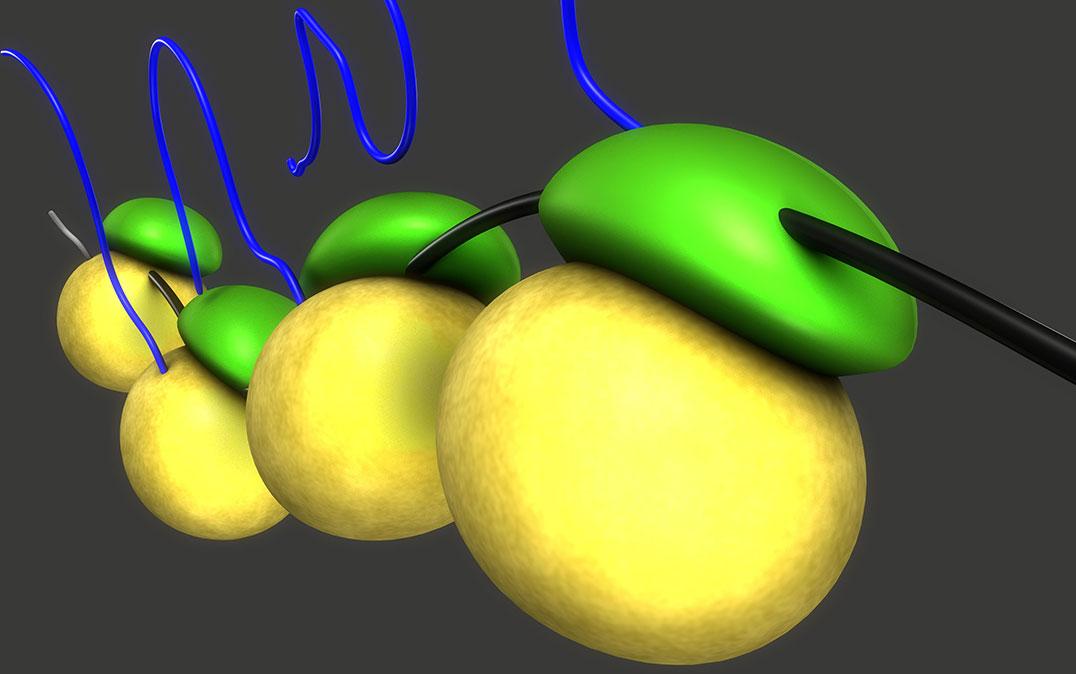Research News
Male-Biased Protein Expression Discovered in Fruit Flies
 Image by sciencepics/Shutterstock
Image by sciencepics/ShutterstockResearchers from the University of Tsukuba have observed that male germ cells in the fruit fly show higher levels of protein expression than female germ cells
Tsukuba, Japan—Fruit flies, Drosophila, are important model organisms for biological research. Molecular tools exist that can turn on, or induce, gene expression in fruit flies, allowing researchers to learn more about the functions of the genes that they manipulate. Researchers at the University of Tsukuba were studying one such system when they unexpectedly noticed that protein expression was higher in primordial germ cells from males.
Germline cells, which pass on genetic material to the offspring, are of particular interest for genetic manipulation because any modifications made in the germline will be passed on to the entire offspring. The germline cells develop from a population of cells known as the primordial germ cells and are present throughout the life cycle of the fly, from embryos through to adults.
A system called Gal4-UAS is commonly used to induce gene expression in Drosophila. This involves an Upstream Activation Sequence (UAS) and a protein called Gal4, which binds to the UAS sequence and activates downstream gene expression. There are three main UAS vectors, and the researchers were interested in measuring the expression induced by the different UAS vectors in germline cells from various stages of the fruit fly life cycle, from the primordial germ cells through to germline cells in embryos, larva, and adults.
To do this, they used the Gal4-UAS system to express a gene known as Green Fluorescent Protein, or GFP, in male and female cells of various stages. The results of this can be observed using a fluorescent microscope, as the cells expressing GFP glow green. They then noticed that the male primordial germ cells showed consistently stronger GFP expression than female cells.
"This male bias in protein expression persisted regardless of the UAS vectors used or the type of fluorescent protein expressed," explains Professor Satoru Kobayashi, senior author, "suggesting that this reflects the underlying level of protein expression within the male cells." When they went on to investigate the amount of protein produced in the cells, they saw that male cells had more protein synthesis occurring.
Sex differences are observed in the early germline, and this newly observed male bias of protein synthesis may be a cause of these differences. The functional and biological significance of this bias is not yet known, but this work has opened a new avenue for research.
###
This work was supported in part by Grants-in-Aid for Scientific Research from the Japan Society for the Promotion of Science (JSPS) (KAKENHI Grant Numbers: 24247011, 25114002, 18H05552, 18K14739, and 20H03287) and by the Cooperative Research Project Program of Life Science Center for Survival Dynamics, Tsukuba Advanced Research Alliance (TARA Center), University of Tsukuba.
Original Paper
The article, "Male-biased protein expression in primordial germ cells, identified through a comparative study of UAS vectors in Drosophila", was published in Scientific Reports at DOI: https://doi.org/10.1038/s41598-021-00729-1
Correspondence
Professor KOBAYASHI SatoruLife Science Center for Survival Dynamics, Tsukuba Advanced Research Alliance (TARA), University of Tsukuba
Related Link
Life Science Center for Survival Dynamics, Tsukuba Advanced Research Alliance (TARA)





